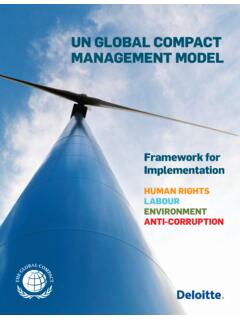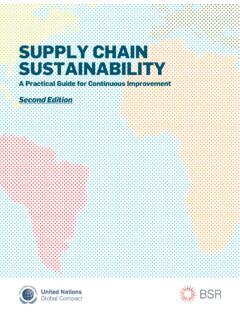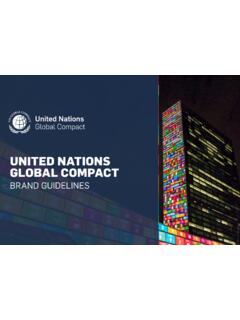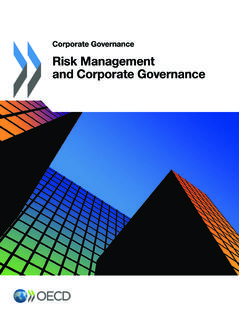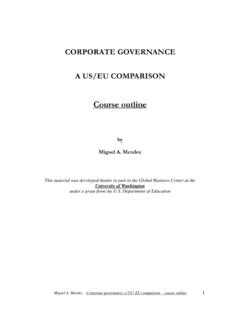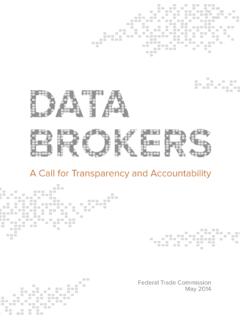Transcription of GUIDE TO CORPORATE SUSTAINABILITY
1 SHAPING A SUSTAINABLE FUTUREGUIDE TO CORPORATE SUSTAINABILITYTHE UNITED NATIONS GLOBAL COMPACT WORKS WITH BUSINESSES IN THE REALMS OF HUMAN RIGHTS, LABOUR, ENVIRONMENT AND ANTI-CORRUPTION TO TRANSFORM OUR WORLD. WE RE SHAPING A SUSTAINABLE FUTURE, AND YOU NEED TO BE A PART OF PRINCIPLED BUSINESS2 STRENGTHENINGSOCIETYWHAT IS CORPORATE SUSTAINABILITY ?Aligning with Ten Principles on Human Rights, Labour, Environment and Anti-Corruption10 Taking action and collaborating with others to advance global challenges28A primer on the ve de ning features of CORPORATE sustainability06 TABLE OFCONTENTSUNITED NATIONS GLOBAL COMPACT55 LOCALACTION4 REPORTING PROGRESSANNEXV iewing SUSTAINABILITY through a local lens42 Transparency in business practice is crucial for sustainability38A look at who is committed to the Global Compact and where they are located463 LEADERSHIPCOMMITMENTE ffecting long-term change begins with a company s leadership34 GUIDE TO CORPORATE SUSTAINABILITY5 THINGSSUSTAINABLE COMPA NIES DOPRINCIPLED
2 BUSINESSSTRENGTHENING SOCIETYLEADERSHIP COMMITMENTREPORTING PROGRESSLOCAL ACTION75 THINGSSUSTAINABLE COMPA NIES DOPRINCIPLED BUSINESSSTRENGTHENING SOCIETYLEADERSHIP COMMITMENTREPORTING PROGRESSLOCAL ACTIONThe connection between the bottom- line and a company s environmental, social and governance practices is becoming clear. The well-being of work-ers, communities and the planet is inextricably tied to the health of the business. The smart choice is to proac-tively manage a company s operations and value chain looking at risks and opportunities through a wide lens. At the same time, our world s chal-lenges ranging from climate, water and food crises, to poverty, conflict and inequality are in need of solu-tions that the private sector can help to deliver.
3 Businesses are responding, moving beyond their basic respon-sibilities and going further into a strategic opportunity space. This in-cludes business models, products and services with a joint societal and eco-nomic return; publicly advocating for government policies that advance SUSTAINABILITY priorities; and, impor-tantly, collaborating with peers to make systemic Global Compact is the world s largest global CORPORATE SUSTAINABILITY initiative, with over 8,000 companies and 4,000 non-business participants based in over 160 countries. A van-guard of companies in all key markets is taking action.
4 Our participants rep-resent nearly every industry sector and size, and come equally from developed and developing countries. The idea and practice of responsible business is rooted in all continents. We have over 85 country networks that are conven-ing companies to act on SUSTAINABILITY issues at the ground level. At the Global Compact we help com-panies, whether beginners on the SUSTAINABILITY journey or recognized champions, to meet their commit-ments to operate responsibly and support society. We do this through a range of activities at the international and local levels from raising aware-ness and developing resources and best practices, to facilitating partner-ships and developing action initiatives on critical issues like climate, water and women s SUSTAINABILITY is imperative for business today essential to long-term CORPORATE success and for ensuring that markets deliver value across society.
5 To be sustainable, companies must do ve things: Foremost, they must operate responsibly in alignment with universal principles and take actions that support the society around them. Then, to push SUSTAINABILITY deep into the CORPORATE DNA, companies must commit at the highest level, report annually on their efforts, and engage locally where they have a presence. WHAT IS CORPORATESUSTAINABILITY? GUIDE TO CORPORATE SUSTAINABILITY8 This GUIDE lays out ve de ning features of CORPORATE SUSTAINABILITY , which the Global Compact asks businesses to strive towards looking at why each element is essential, how business can move forward and what the Global Compact is doing to : PRINCIPLED BUSINESSFor any company seeking to be sus-tainable, it begins with operating with integrity respecting fundamental responsibilities in the areas of human rights, labour, environment and anti- corruption.
6 The Global Compact s Ten Principles provide a universal language for CORPORATE responsibility understood and interpreted in 160 countries around the world by over 8,000 companies and a framework to GUIDE all businesses regardless of size, complexity or location. Respecting principles in business operations and supply chains is a base-line for CORPORATE SUSTAINABILITY . Yet, principles are about far more than compliance. They provide common ground for partners, a moral code for employees, an accountability measure for critics. A growing number of com-panies are seeing beyond risk, finding real value in actively addressing social, environmental and governance issues.
7 2: STRENGTHENING SOCIETYS ustainable companies look beyond their own walls and take actions to support the societies around them. Poverty, conflict, an uneducated work- force, and resource scarcity, for exam-ple, are also strategic issues for business success and viability. With business activity, investments and supply chains reaching all corners of the earth, companies are choosing to be ac-tive stakeholders in societies for the long run, knowing that they cannot thrive when the world around them is deteriorating. Companies are aligning core business activities, philanthropy and advocacy campaigns with UN goals and issues.
8 Collaboration, in particular, is essen-tial. Companies and stakeholders are coming together to provide a collec-tive voice and share risks in tackling major challenges that no single player can overcome, such as corruption, cli-mate change and H AT COMPANIES WANT FROM THE GLOBAL COMPACTGood practice examples Tools & guidance Trainings 123 BUSINESS PARTICIPANTS AROUND THE WORLD600 AFRICA & MENA364 NORTHERN AMERICA1,267A SIA & OCEANIA4,345 EUROPE1,712 LATIN AMERICA82%of companies attribute progress on their sustain-ability work to participating in the Global CompactUNITED NATIONS GLOBAL COMPACT9 TOP 3 REASONS WHY COMPANIES PARTICIPATE IN THE GLOBAL COMPACT79%Increase trust in company through commitment to sustainability59%Universal nature of the principles56%Promotes action on SUSTAINABILITY within the company3: LEADERSHIP COMMITMENTE ffecting change begins with the company s leadership.
9 A public com-mitment by the chief executive, with support from the Board of Directors, is required to participate in the Glob-al Compact. Leadership must send a strong signal throughout the organi-zation that SUSTAINABILITY counts, and all responsibilities are important. This means instigating action in key areas: Board ownership of the agenda; adjustments to policies and practices; alignment of government affairs; training and motivating employees; pushing SUSTAINABILITY into the sup-ply chain; and disclosing efforts and outcomes. Leaders also recognize they cannot shift systems alone, working with others to shatter barriers and increase the odds of success.
10 Sustain-ability requires a long-term vision and commitment to ongoing efforts, both to ensure progress and keep pace with a rapidly changing world. 4: REPORTING PROGRESSNon-financial reporting expectations have evolved from a feel-good supple-ment to a strategic report showing measurable gains and losses. As a chief accountability measure, signatories to the Global Compact are required to produce an annual Communication on Progress (COP), typically included as part of their SUSTAINABILITY or an-nual report, providing the company s stakeholders with an account of their efforts to operate responsibly and support society.
